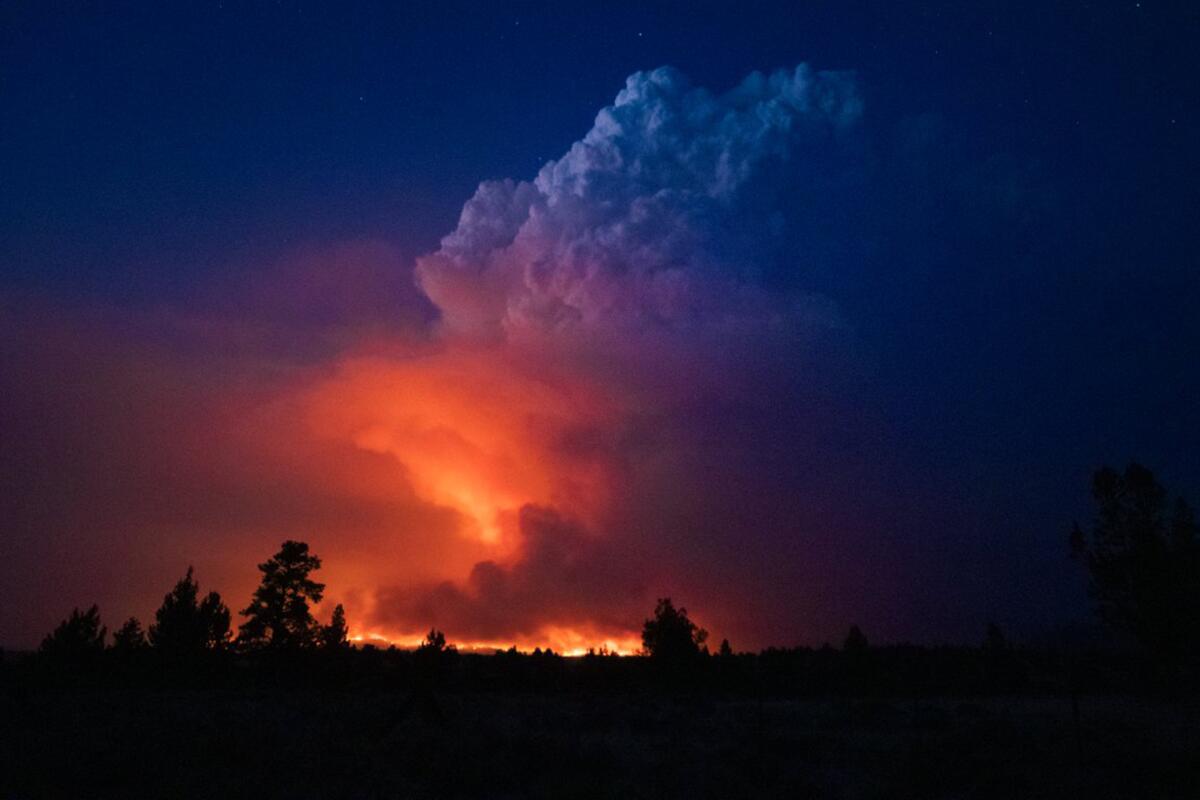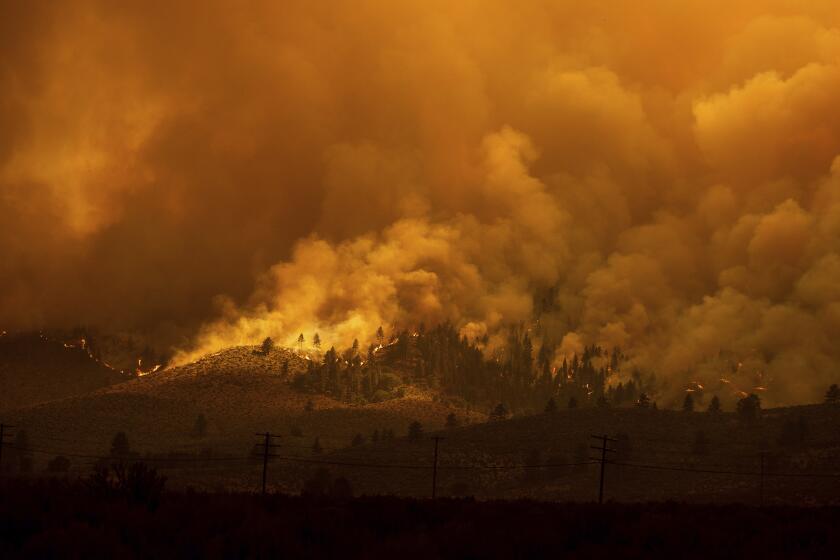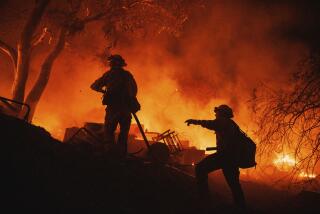Op-Ed: The Bootleg fire is burning miles from my house — climate change has never felt more real

Ash is raining from the sky, and smoke, thick enough to taste, covers Lakeview, Ore., where I live just five miles from the Bootleg fire evacuation zone. The fire has already consumed more than 620 square miles and continues on its path of destruction, moving closer to my home by the minute. We’re used to wildfires in eastern Oregon, but things have never been this bad. In June, a deadly heat wave shattered records and killed 116 people in Oregon alone. Now, the Bootleg fire is the largest of dozens of wildfires raging throughout the Western U.S. — and it’s only July.
The science is irrefutable: These extreme events would not be happening were it not for the reality of human-caused climate change. Reducing greenhouse gas emissions alone will fail to meet the moment: Managing overcrowded forests and fixing outdated energy infrastructure must be central features in new climate policies.
The Bootleg fire has already hit major transmission lines, disrupting electricity flow and threatening the infrastructure that provides power to nearly 80% of California.
The health of the landscape in Lake County, where Lakeview is the county seat, depends on frequent, low-severity fires that have historically cleaned out dead trees and prevented larger, more destructive fires. But nearly 100 years of excessive fire suppression have disrupted this cycle. To get back on track we need active forest management activities that promote ecological diversity, support healthy trees and reduce the risk of catastrophic wildfire.
These methods commonly include thinning areas with too many trees followed by prescribed burning to maintain tree health and promote the growth of grasses, shrubs and flowers that are all contributors to a forest’s ability to capture carbon from the atmosphere and store it in the soil. But these forest management activities are held up by a substantial lack of federal funding.
Meanwhile, planned safety power shut-offs intended to reduce the danger associated with extreme weather and transmission lines can leave entire communities without power. It’s clear that our current approach to forest management and a centralized energy system are contributing factors to the crisis. Investing in active forest management while shifting to clean and distributed energy systems on a community scale ensures that when the next “megafire” ignites, the risk of large-scale power outage is all but eliminated.
Even as fires ravage Oregon, our state is making progress. A state House bill passed last month committed Oregon to 100% clean electricity by 2040 and approved $50 million in grants for community-scale renewable energy projects. This legislation puts Oregon on track to make the quickest shift to a renewable-powered electric grid in the nation, and it recognizes the need for self-contained energy generation that can stay online during extreme weather events. Along with an increased pace and scale of forest management, these are the kinds of solutions needed across the U.S.
As the Bootleg fire pushes closer to where I live, I will continue to prepare for the fire to overtake my land and my home. I trust the firefighters tasked with protecting my belongings, but if the megafires that have burned over the last few years have demonstrated anything, it’s that no matter how prepared you are, nothing is guaranteed. The Bootleg fire is the latest real-time demonstration of how climate change affects us all.
If state and federal governments do not do more to quickly improve forest management practices; transition to clean, localized electricity; and reduce greenhouse gas emissions, many more people will end up where so many Oregonians currently are: evacuating their neighborhoods and hoping their homes don’t burn.
The dryness of the vegetation, primed by both long-term drought and shorter-term heat waves, is making it easy for fires to ignite and even easier for them to spread.
Nick Johnson is executive director of Lake County Resources Initiative, which focuses on sustainable natural resource use in rural Oregon.
More to Read
A cure for the common opinion
Get thought-provoking perspectives with our weekly newsletter.
You may occasionally receive promotional content from the Los Angeles Times.







